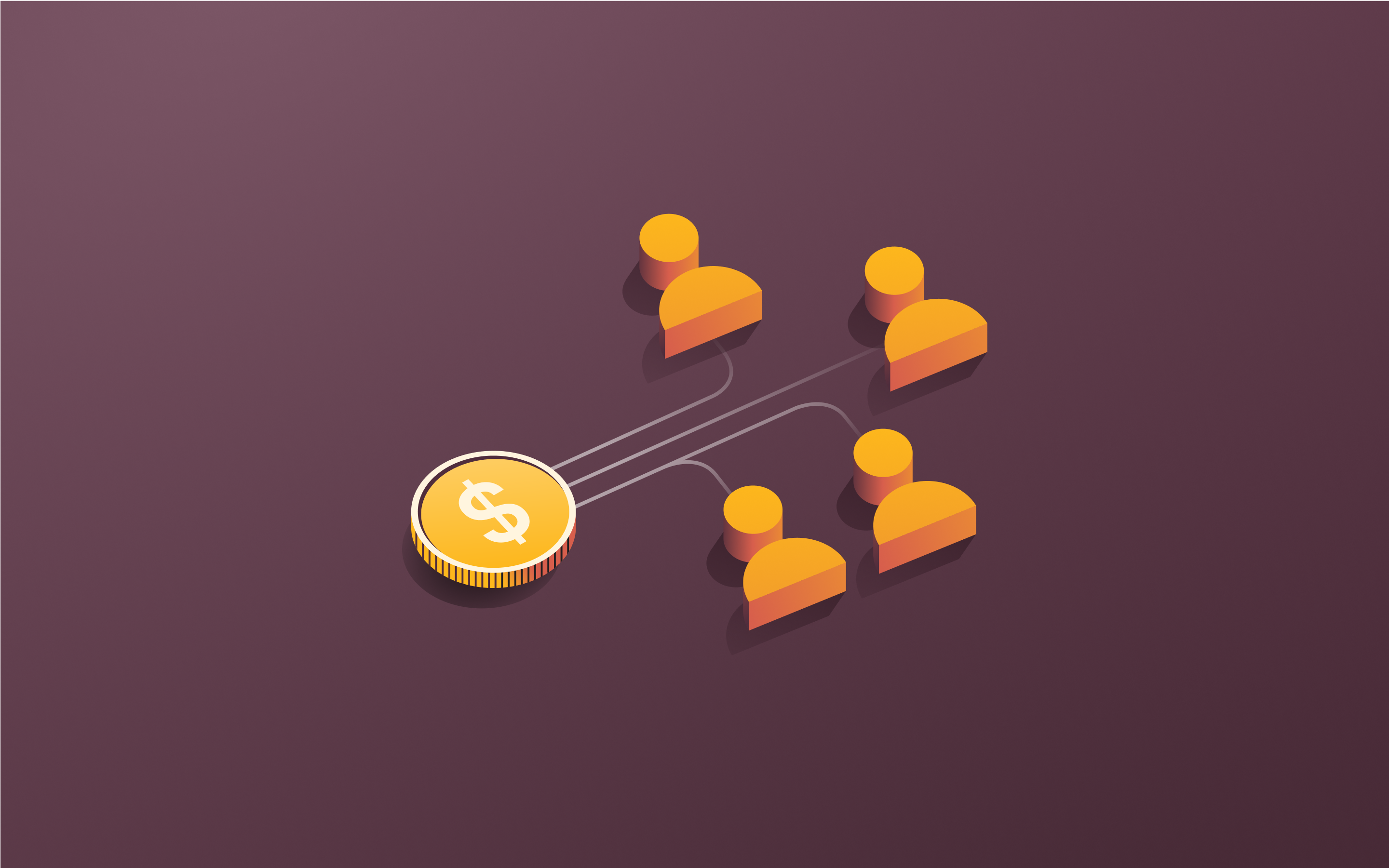Payroll automation: what it is, benefits, and how to leverage it
Whether you're a small business owner or the leader of a multinational corporation, your employees are among your most essential resources. Ensuring that your payroll process runs as smoothly as possible is likely one of your top priorities.
In this article, we’ll explain how payroll automation software can help small businesses increase efficiency, reduce costs, and enjoy the peace of mind that comes from reducing the risk of human error from your payroll process.
What is payroll automation?
Payroll automation refers to the use of specialized software and other technology to streamline the payroll process by reducing the need for human intervention or eliminating manual tasks.
In a manual payroll system, members of the human resources, finance, or accounting departments collaborate to ensure that business records remain up-to-date, employees receive wages on time, and taxes are filed promptly. In an automated payroll system, on the other hand, specialized software performs the calculations, generates the necessary reports, and even coordinates bank transfers and tax filings.
- Manual payroll: Noodle Co. has a single office and three employees. Bob, the owner, reviews timecards every month and manually enters wage information into an Excel spreadsheet that calculates federal and state withholdings. He then configures direct deposits for each employee and types up a pay stub.
- Automated payroll: Food Corp. has offices around the world and employs hundreds of people. The finance department uses an automated payroll system with built-in time-tracking software to calculate wages and withholdings, create payslips specific to each location, and pay employees. The system also automatically prepares and files Food Corp.’s employer tax returns.
Benefits of payroll automation
Automated payroll solutions have much to offer companies of any size, from increased accuracy to greater employee satisfaction.
1. Eliminates manual errors
Even the most conscientious employees sometimes make mistakes. It’s part of being human. When those mistakes involve complex interconnected calculations, however, correcting them can mean hours of duplicate work. There’s also the risk that the time spent correcting mistakes will lead to delays in payroll processing, which can expose your company to litigation risk.
An automated payroll system largely eliminates the possibility of human error by assigning complicated calculations to machines.
2. Aids compliance
In addition to being time-consuming to correct, payroll calculation errors can have serious compliance consequences. Incorrect withholding amounts or late filings can incur penalties from the IRS, for example.
Automated payroll systems not only reduce the chances of incorrect payroll calculations, but they can also manage the filing and deposit process on behalf of your company.
3. Saves time and increases efficiency
Payroll tasks like running reports and updating required records are essential in any business. However, they can also be incredibly labor-intensive, even in smaller companies. Manual data entry of timekeeping information, for example, can take several hours that could be spent on recruiting or onboarding.
Automated payroll systems allow HR and finance professionals to focus on substantive work while specialized payroll software handles the bookkeeping.
4. Provides enhanced data security
Processing payroll involves handling sensitive employee data, from Social Security numbers to dates of birth to personal addresses. Manual systems, particularly those involving printed documents, often lack the security features to keep this information confidential.
Most payroll automation software incorporates enhanced security measures, such as encryption, to protect employee data. And solutions like Rippling take security a step further, allowing managers to tightly control who can access employee information to protect privacy within organizations.
5. Offers real-time reporting and insights
Because automated payroll systems can store and manipulate large quantities of employee and payroll data with ease, they can produce comprehensive reports in a fraction of the time it might take a human employee.
An automated payroll system like Rippling can also retrieve that information in seconds. In contrast, it might take multiple people across several departments days—or weeks—to collect and collate the same data points.
6. Improves employee experience
Automated payroll systems can guarantee that your employees receive what matters to them most when they expect to receive it: their salaries. With an automated payroll system, employers can schedule payroll runs to recur at set times to eliminate delays in payment.
Errors in payroll processing impact your business and hurt employees. For example, a mistake in calculating federal income tax withholdings can result in an unexpectedly hefty tax liability for your employee.
How to automate payroll: 5 ways to start
Shifting from a manual to an automated payroll process is a significant change that requires planning and preparation. How your company manages the transition will depend on a number of factors, including the size of your organization and the complexity of the existing process, but it’s important to have a roadmap.
If a complete overhaul of the payroll process seems daunting, start with core functionalities like the ones below.
1. Time and attendance tracking
Automated time-tracking software helps hourly employees avoid missed punch-outs and lost hours. The software factors in working hours and can flag discrepancies in timesheets before they lead to problems.
Example: An employee forgets to punch several days in a row, but they always remember to punch out. Time-tracking software integrated into your payroll system will alert HR to a potential problem with attendance, prompting a manual correction.
2. Payroll calculation and processing
The calculations required to process payroll, ensure correct withholdings, and prepare an accurate tax filing can easily consume the time and effort of multiple employees for several days every month.
On the other hand, automated payroll software can perform these tasks and more in a matter of hours and with a greatly reduced risk of human error.
3. Tax filing and compliance reporting
Once you’ve input the relevant tax laws affecting your employees into your payroll software solution, the program automatically computes the correct withholdings based on your business location and number of employees.
Some payroll systems go even further, taking over the process of completing and filing important tax documents like Form 941 and coordinating direct deposit of employer contributions and withholdings.
In the event of an audit or notice from the IRS, automated payroll systems simplify the process of collecting and reporting important information.
4. Employee self-service
Automated payroll systems empower employees to proactively manage their own financial and HR processes by allowing direct changes to important information about direct deposits, employee benefits, expenses, and time off requests.
Example: Frankie has recently opened a new bank account and needs to urgently update their direct deposit information to receive their paycheck. An automated system with an employee self-serve platform allows Frankie to make the change immediately and without sharing private details with co-workers.
5. Direct deposits and pay distribution
When you automate payroll runs, you can be sure your employees will receive their wages and salaries on a consistent schedule that allows them to manage their finances. Delays in pay distribution can damage productivity and morale, a risk you can almost entirely mitigate by outsourcing the payment process to payroll software that also manages direct deposits.
3 payroll automation software tools
These payroll management solutions offer different levels of support and a diverse selection of features.
1. Rippling
Rippling is a comprehensive HR, finance, and IT software solution designed to streamline and standardize multiple functions across operations. Its automatic payroll processing tool, Rippling Payroll, handles payroll withholdings, automatically completes required federal tax forms, and manages monthly deposits.
Employees benefit from a dedicated self-service portal with access to pay stubs, employee benefits information, and important tax forms, like W-2s.
Pros:
- Natively built HR, Finance, and IT solutions
- Over 500 integrations
- Manages payroll, PTO, employee benefits, and workers compensation
- Custom workflows and reporting
Cons:
- Less robust for global payroll functions
- State taxes require an additional payroll administration package
2. Deel
Deel provides global payroll, contractor management, and other HR tools. In-house payroll experts advise on hiring, pay compliance, tax laws, and other regulatory standards. Deel also offers a benefits tool and global analytics reporting to provide an overview of payroll spending, including employer costs, taxes, bonuses, and more, all in one standard currency.
Additionally, Deel supports multiple payment methods for employees, including standard bank transfers, credit and debit card payments, Brex, and cryptocurrency payments to suit your business's requirements.
Pros:
- Live support available 24 hours a day, seven days a week
- Supports multiple payment methods and currencies
- Hiring and contractor support in over 100 countries
Cons:
- Not native-built
- Does not include time-tracking
- Fewer than four accounting integrations
- Priced per employee
3. ADP
ADP Payroll is a popular payroll automation software designed for businesses of all sizes. It includes payroll calculations, tax deductions, and tax management features. The software integrates with HR systems and financial software, offers multiple payment methods, and helps maintain tax compliance through automatic updates.
Pros:
- Scales easily as businesses grow
- Wide range of third-party integrations
- Possible to add time tracking, attendance, insurance, and employee benefits tools
Cons:
- Inconsistent user interface across solutions
- No custom HR workflows
- Limited reporting capabilities
How to choose an automated payroll system
Choosing payroll software requires careful consideration. Each payroll management tool offers a unique set of tools and features, and comparing them can feel almost as challenging as manually preparing a Form 941.
To help you narrow down the candidates and prioritize the features that matter most to your business, ask yourself:
- How much time do we currently spend on payroll tasks? How much would we save with this system?
- Does this solution include other HR, IT, or finance solutions? Does it integrate with the solutions we currently use?
- Can this software grow with us as we scale? Is it a good fit for a company of our current size?
- Does this automated payroll solution have all the functionality that I need, such as time tracking, state and federal tax filings, PTO tracking, and reporting?
If you’re switching from one payroll software to another, you may also want to make a list of the features your current solution lacks to guide your search.
The best automated payroll system for your business
Unlike global payroll providers that often rely on third-party vendors or local providers in their countries, Rippling Payroll processes your entire payroll run in-house on its native payroll platform, ensuring not just efficiency but 100% error-free guarantee.
Even more powerful, Rippling incorporates over a dozen key HR tools into a single unified platform. All your HR data automatically syncs with payroll, eliminating the need for manual data entry and calculations. Run your payroll with a single click and pay your workforce on time and in the correct currency, no matter where your employees live or pay taxes.
This blog is based on information available to Rippling as of July 8th, 2024.
Disclaimer: Rippling and its affiliates do not provide tax, accounting, or legal advice. This material has been prepared for informational purposes only, and is not intended to provide or be relied on for tax, accounting, or legal advice. You should consult your own tax, accounting, and legal advisors before engaging in any related activities or transactions.











